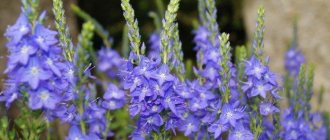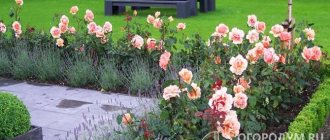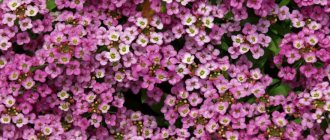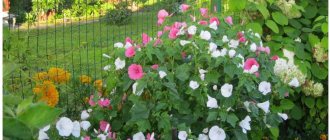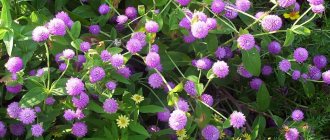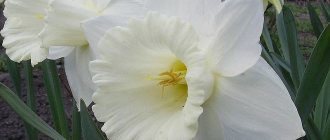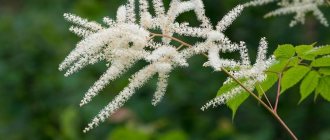Colorful symbols of summer, reverent, tender, and at the same time so hardy, decorative poppies do not leave anyone indifferent. The inimitable colors and structural details of these amazing flowers are an invariable decoration of any summer garden. But growing decorative poppies is not a completely standard task, although it is not difficult. Poppies are propagated by seeds, and the available choice of sowing methods and methods allows everyone to find their own ideal option.
Alpine poppy (Papaver alpinum). © HermannSchachner
The reputation of cultivated, ornamental poppies has suffered significantly from confusion and their association with a species whose cultivation is punishable by law - the soporific poppy. The most beautiful ornamental poppy, the oriental poppy, which, if it can be grown, is limited to a few copies, as well as several other species, also suffered from the legislative ban. But other types of poppies, which have nothing to do with opiates and do not contain narcotic substances - beautifully flowering annuals, biennials and perennials - for some reason also remain a banned plant for many. And although there are no fewer admirers of the beauty of poppies, they are still significantly inferior in their distribution to other summer-blooming competitors.
Note! According to the current legislation of the Russian Federation, the cultivation of the following types of poppies is prohibited: soporific, oriental, bristlecone, bract.
Description of poppy
Members of the genus Poppy (Papaver) are herbaceous perennials, biennials and annuals with very powerful taproots, strong, straight single shoots, and amazing heavily haired carved greenery, famous for its filigree silver-blue texture. Alternately arranged, pinnately dissected, almost prickly to the touch due to the edge, the leaves can reach 30 cm in length.
The poppy blossom is a fascinating sight. Drooping buds, straightening peduncles as they bloom and spectacular large saucer flowers with the most beautiful stamens among garden plants are mesmerizing. The calyx of the flower consists of two large sepals, and the corolla is easily recognized by its delicate, almost transparent, tremulous four large petals surrounding a delightful “powdered” center of anthers and stamens, usually almost black in color.
Red, yellow, pink, orange, violet and even blue - decorative poppies boast amazingly beautiful shades that inspired legendary painters and today cause only admiration. After flowering, fruit boxes with beautiful discs at the top, filled with small rounded seeds of different shades of gray, are set.
Without exception, all poppies are propagated by seeds. And annuals - peony poppy, tangled poppy or changeable poppy are now classified as self-seeded poppy, glaucous poppy, bare-stemmed poppy or saffron poppy, peacock poppy; and more durable poppies - Alpine poppy, Amur poppy, Atlantic poppy, Burcera poppy, Lapland poppy, Miyabe poppy, polar or Scandinavian poppy, grayish or Tien Shan poppy, Tatra poppy - are best propagated by seeds. Some vegetative methods are also used only for perennial species. Growing poppies from seeds is very easy, as the plant often blooms within two months of germination.
Terry and peony poppy. © thompson-morgan
Chemical characteristics
The chemical characteristics of plants of the genus Papaver have been studied quite well. Probably everyone has seen how, after damage to a green poppy head, a liquid is released, the so-called jelly of the poppy. This substance is known as opium, which contains more than 30 alkaloids. The most important of them:
- morphine (20%);
- noxapine (5%);
- codeine (2%);
- papaverine (2%);
- thebaine (1%).
In 1803, the alkaloid morphine was obtained from raw opium, and in 1874, heroin was obtained by treating morphine with acetic anhydride. At one time, some pharmaceutical companies used morphine in drugs for coughs, chest pain and pneumonia. This practice was then abandoned as it became known that such drugs were addictive.
Today, the most widely used opium alkaloid is codeine. This substance is obtained in several ways: from natural sources, as a result of methylation of morphine, or in the process of synthetic transformation of thebaine.
But besides these substances, the poppy plant contains fiber, protein, nitrogen, calcium, phosphorus, iron, iodine, manganese, copper, magnesium, sodium, potassium, zinc, B vitamins and some other useful components.
Nutritional value of poppy seeds (per 100 g)
| Calorie content | 525 kcal |
| Carbohydrates | 28.13 g |
| Squirrels | 17.99 g |
| Fats | 41.56 g |
| Cellulose | 19.5 g |
| Vitamin B1 | 0.854 mg |
| Vitamin B2 | 0.1 mg |
| Vitamin B3 | 0.89 mcg |
| Vitamin B5 | 0.324 mg |
| Vitamin B6 | 0.247 mg |
| Vitamin B9 | 82 mcg |
| Vitamin C | 1 mg |
| Vitamin E | 1.77 mg |
| Sodium | 26 mg |
| Potassium | 719 mg |
| Calcium | 1438 mg |
| Copper | 1.63 mg |
| Iron | 9.76 mg |
| Magnesium | 347 mg |
| Manganese | 6.7 mg |
| Phosphorus | 870 mg |
| Selenium | 13.5 mg |
| Zinc | 7.9 mg |
Strategies for growing poppies from seeds
Poppies are one of those herbaceous plants that respond very poorly to transplantation. If possible, they should always be sown directly at the growing site. Poppies are grown very rarely from seedlings, usually only when the plants are going to be used as potted or container accents.
Conditions for growing poppies
Poppies, regardless of type, are light-loving plants, but perennial species can withstand light shading. Poppies, in theory, are not afraid of even windy areas, but if you do not protect the plant from drafts, its beautiful flowers will quickly fall off. By choosing secluded, warm, protected areas, you will prolong the pleasure of watching the magnificent poppies bloom. The soil for poppies can be chosen from any of the cultivated and non-damp soils, but the best flowering is always observed on nutritious soil. There is a place for poppies in mixed gardens, flower beds, rock gardens or rock gardens, and on the lawn.
When choosing a place for poppies in your garden, it is worth remembering that the flowering of this plant is very short: within a month after its start, the fruits ripen, and then the plant quickly leaves the garden scene. Even the best perennial poppies have a growing season limited to an average of 100 days. Therefore, poppies need to be planted so that neighboring plants can disguise the unattractive fading and then disappearing greenery, or provide for the planting of other seasonal annual stars in place of poppies. The best partners for perennial poppies are delphiniums, cereals, cornflowers, yarrow, asters, speedwells, oregano and cornflowers.
Hollow poppy (Papaver nudicaule). © 99roots
How to collect poppy seeds. MAIN MAGICAL PROPERTIES OF POPPY IN MAGIC
Among many peoples, the poppy is now a symbol of fertility, oblivion, idleness and a cheerful life without worries. The red flower is a symbol of beauty, happiness, success and relaxation.
This is the ability to bear children, prosperity, luck and success in business, protection from all kinds of evil, amulet, resolution of love problems, viewing the future and much more.
Use of poppy seeds as a talisman:
- Carry a small amount of poppy seeds with you and put them in your child's backpack. This is guaranteed to protect you from troubles and accidents.
- When you make a variety of amulets for yourself and your home, add these wonderful seeds. This will enhance the effect many times over!
Oh, how the evil spirit is afraid of these seeds! Sprinkle some seeds in the corners of all rooms and leave them for exactly one day. Make sure no one touches them, especially small children!!!
After a day, sweep it up with a broom and throw it in the toilet. While rinsing with water, say: “As the poppy disappears and dissolves in water, so all my problems and illnesses disappear and dissolve.” Give thanks.
It is VERY effective to wash off the poppy with water, since it is the element of water, and water can work with it most “skillfully”.
- If you have to go into a company that is obviously unpleasant, where there will be people with whom you would not like to meet (gossipers and chronic pessimists), pour some grains into your right sock. Protection from the evil eye, damage and other troubles is guaranteed!
Is it uncomfortable and can you feel the grains on your foot? What is more important to you: to endure a little temporary discomfort or to “attach” a sea of negativity to yourself? We are confident that you will make the right choice.
- If you have your own farm and livestock, then after the cow calving, scatter a small amount of poppy in the barn. This will protect both the cow and the newborn calf from disease and pestilence.
- You can also use these miracle seeds to protect your garden from crop failure. To do this, take just a few seeds and place them on your right palm, move them in a circle clockwise three times, ask the poppy to protect your harvest, thank them and blow them to the ground. Rest assured that this will be the case. This is a very ancient method that has been tested by many in practice in our times.
Growing perennial and biennial poppies
Sowing seeds of perennial and biennial poppies is similar and not complicated. These poppies are grown:
- sowing in early spring;
- sowing before winter.
The latter option is considered preferable, since the plants are stronger and more powerful, develop better and bloom earlier. When sowing in spring, young plants will need more careful care, because while the seedlings are getting stronger, they will already face heat and drought and will not be able to develop normally without watering.
Perennial or biennial poppies can be sown in seedling beds, diving after the appearance of the first or second true leaf to a permanent place, but it is better to sow them immediately at the place of cultivation.
During pre-winter planting, the sowing of poppies is delayed until the last minute so that the seeds, which germinate quickly enough even in cold soil, do not wake up before the beginning of winter. Even a soil temperature of 3-5 degrees is not suitable: poppy is sown when the soil has time to freeze in the top layer, that is, most often in November.
In the spring, planting is carried out when the weather permits, the snow has melted and the soil has at least slightly thawed.
The technique for sowing poppy seeds remains the same regardless of the timing of their sowing:
- The soil is prepared in advance or before planting by digging and loosening the soil. When cultivating the soil, it is necessary to remove weed rhizomes, apply organic fertilizers and a complete mineral mixture (about 10 kg of organic matter, compost or humus and 40-50 g of mineral fertilizers per square meter of soil).
- At the sowing site in the fall, shallow grooves or rows are carefully created, only up to 2–3 cm deep. Spring sowing can be carried out both in furrows and superficially.
- Poppy seeds are placed at a considerable distance from each other (from 5 to 20 cm) so that the plants do not need to be thinned.
- The winter crops are covered with soil from above, making sure that they do not go too deep. When sowing in spring, the seeds are not covered or covered with a light layer of soil or film to speed up germination and the procedure is completed with watering.
- After spring sowing, you need to maintain stable soil moisture for 2 weeks and make sure to remove the film immediately when seedlings appear.
Seeds sown in the fall will germinate in the spring, as soon as the soil warms up to 3-5 degrees; spring sowing can be expected in 10-20 days. Even young plants are frost-resistant, but if frost exceeds 5 degrees below zero, then it is better to additionally protect spring crops with non-woven materials.
If sowing was carried out densely, then the seedlings are thinned out twice - first at a distance of 10 cm between plants, and then at a distance of 20 cm.
Perennial poppy seedlings. © directplant
Caring for young poppies
Poppies are drought-resistant, hardy and generally unpretentious plants. One point of care is very important for young seedlings, and even adult poppies - timely weeding, since poppies will not be able to compete with other aggressive plants.
If sowing was carried out in the spring, then until the plants become stronger, they need to be protected from drought. Both fall-sown and adult poppies in the active growing season respond well to additional watering, but the main thing with moisture is not to overdo it, just providing protection from drought. If the plants are very tall or the site is windy, then it is better to tie the stems to supports as they grow.
There is no need to cover young poppies during the first winter.
Decorative poppies also require other aspects of care:
- loosening the soil;
- feeding (at least one spring or 2-3 feedings per season)
Young poppy bush. ©Jason
Ways to combat diseases and pests
There are several diseases that are dangerous for poppy. Often the plant suffers from root rot, powdery mildew and black spots on the leaves. To quickly get rid of such diseases, you should spray the bushes with Bordeaux mixture or copper oxychloride. Fungicides also help, especially Topaz and Maxim. The products “Aktara” and “Aktellik” rid the plant of thrips, aphids and secretive proboscis.
The plant is widely used in the field of landscape design. Poppy fits perfectly into any flower bed. When creating compositions, you just need to take into account the short flowering period of the poppy and select plants with a longer flowering period.
Alternative methods for propagating poppies
All poppies, both annual and perennial, self-sow, and this ability can be used for “improvisation”, creating natural accents and unexpected flowering spots. If you don’t want poppies to appear in unexpected places and “migrate” around the garden, or you simply want to limit the amount of self-seeding in annual poppies that are very generous in this regard, then you need to remove the seed pods before they ripen and scatter the seeds, which scatter amazingly easily from the holes under the disc at the top of the fruit.
You can often see information that poppies are divided and rejuvenated, and for perennial species it is even recommended to dig up and divide plants once every 3 years. But replanting poppies is very poorly tolerated and can only be done in exceptional cases when the plants are in danger of dying. This is not about true separation, but about the separation of lateral rosettes and shoots that appear not only in spring, but also at the end of summer. Such babies take a very long time to take root and it is difficult, but this is still an acceptable method of reproduction.
Today, more and more people are deciding to propagate poppies using green and root cuttings; root sections are found on sale along with seed packets and in botanical gardens. Root cuttings are cut from taproots, dividing them into pieces 4-5 cm long and at least 5 mm thick. After treating the cuts with crushed coal, they are dried, and then the cuttings are planted, leaving 1/3 above the soil for rooting. Under a cover, with stable humidity, the plants quickly produce tiny rosettes. After rooting and sprouts appear, the cuttings can be transplanted to a permanent location. Green cuttings are cut from lateral, weak shoots that develop on plants at the end of summer. They are rooted under a hood in a constantly moist substrate.
Use of poppy seeds in cooking
Poppy seeds are sprinkled not only into dough, but also into healthier dishes!
I’ll start, perhaps, not with the most obvious dishes for poppy seeds - not with baking, but with milk of poppy seeds. This unique drink is consumed by vegetarians, vegans and raw foodists all over the world. No, this is not at all a healthy plant-based alternative to alcohol and this milk does not intoxicate the brain at all. Milk obtained from poppy seeds, if drunk regularly, strengthens bones, nails and teeth day after day.
In general, poppy is considered the record holder for calcium content, both among plant and animal foods. Regular milk wasn't even close!
So, 100 grams of poppy seeds can contain up to 1450 milligrams of this valuable microelement, while the “calcium” Parmesan cheese itself has no more than 1300. In cow’s milk, by the way, this figure does not exceed 120 milligrams.


